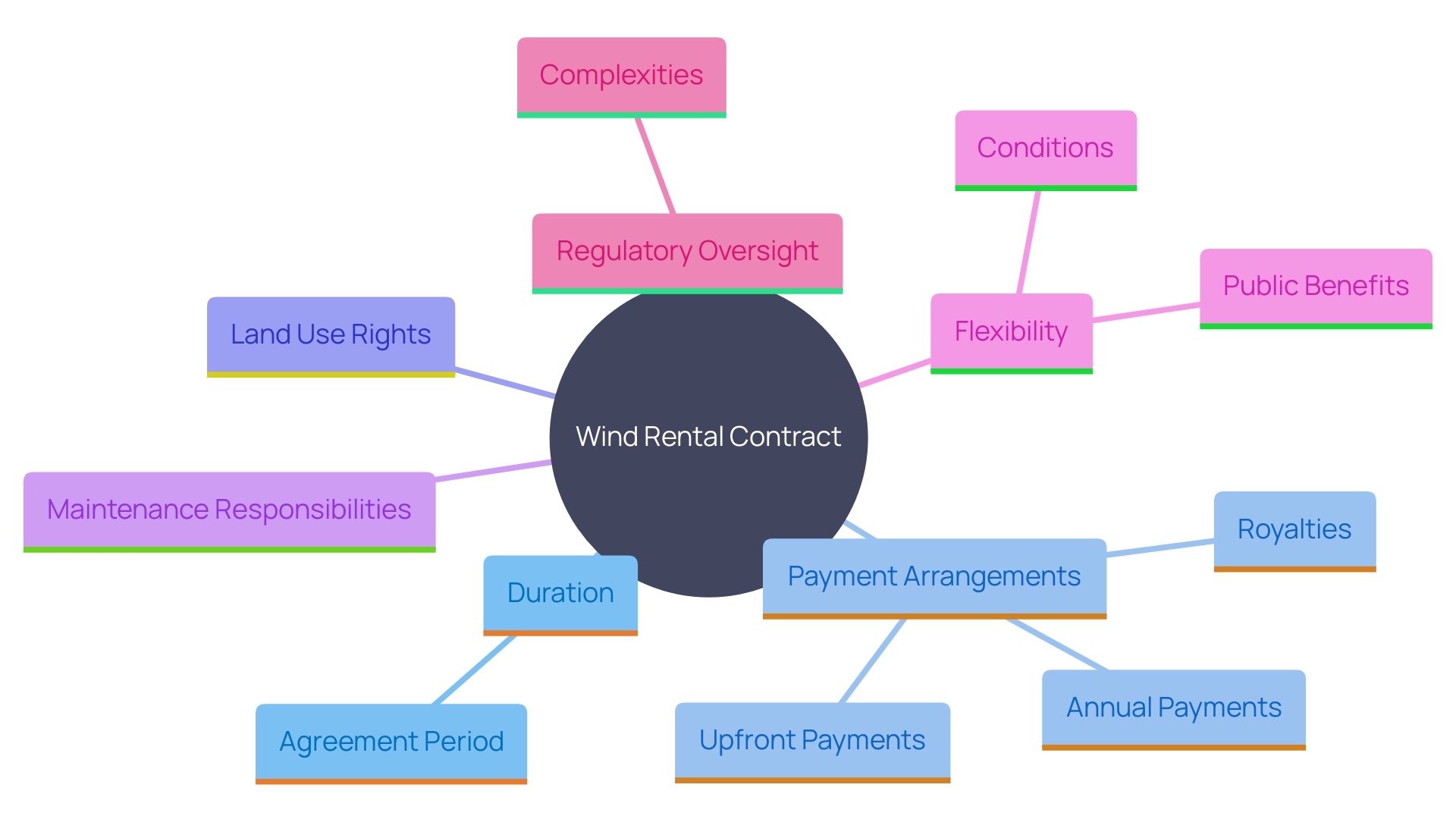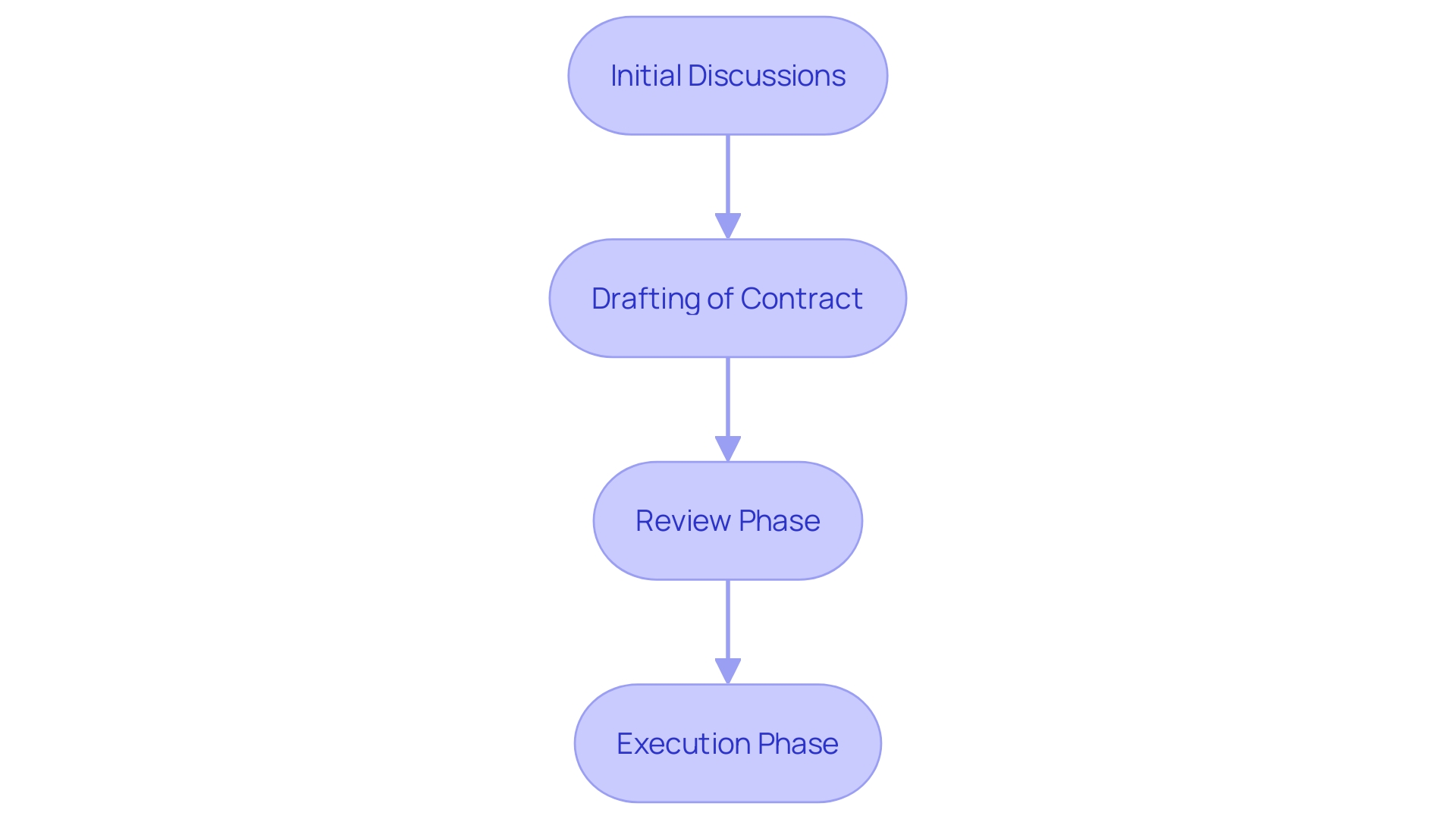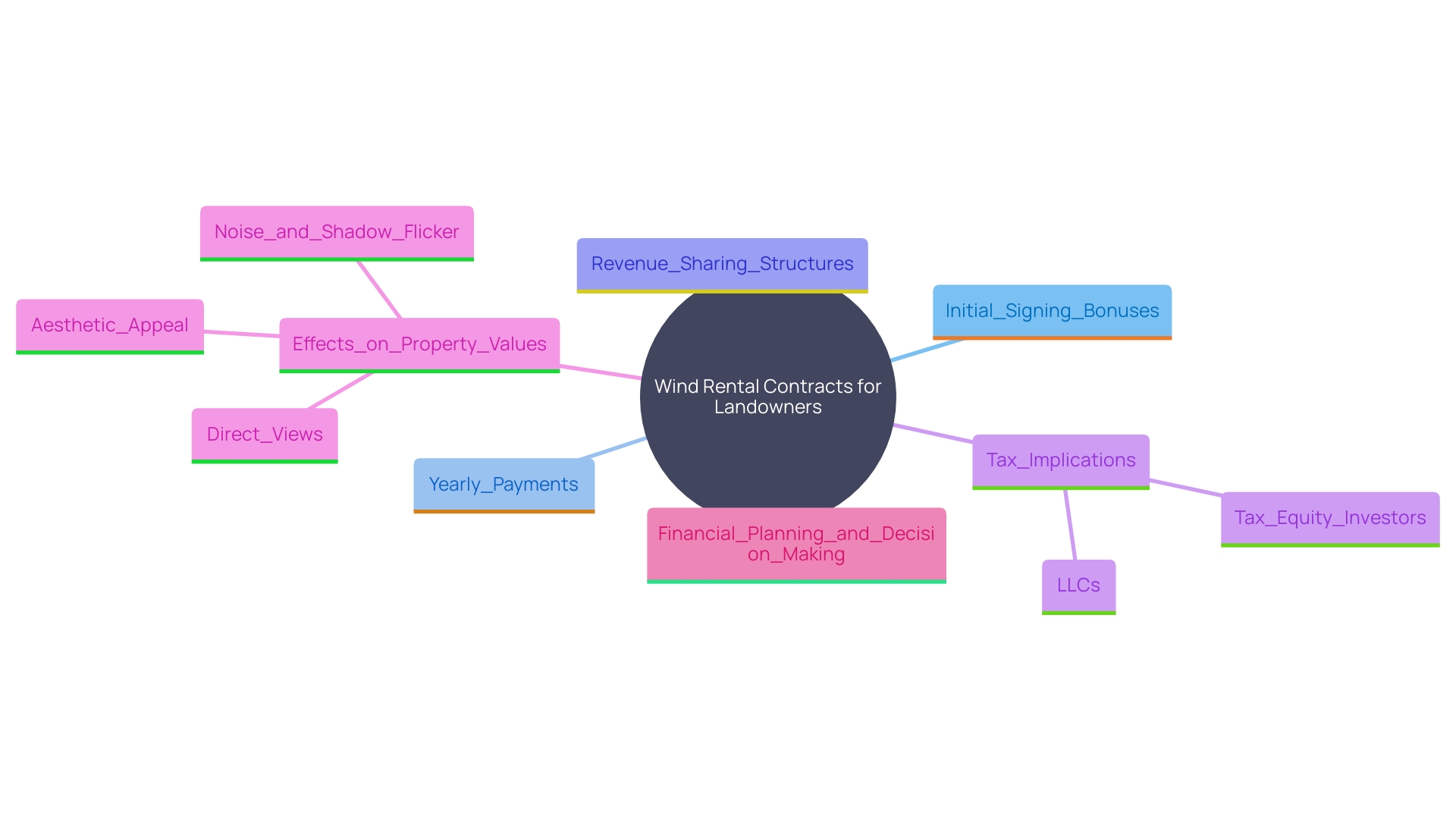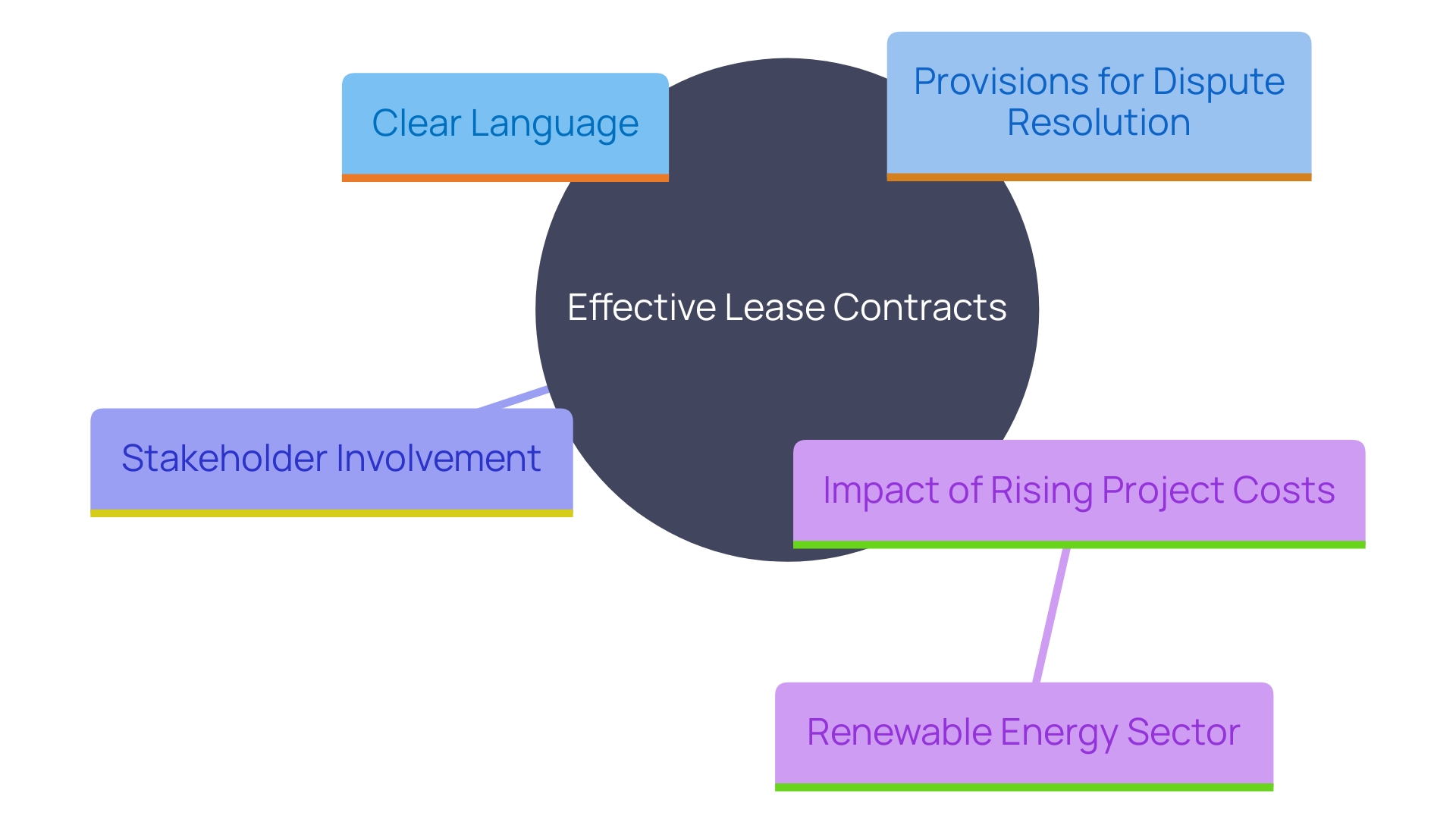Introduction
The establishment of a wind lease agreement is a complex process involving several critical components and phases that ensure a successful partnership between landowners and developers. These agreements, which typically span several decades, delineate the rights and responsibilities of each party, providing clarity on issues such as lease duration, payment structures, land use rights, and maintenance responsibilities. Properly defining these elements is essential to prevent future disputes and misunderstandings.
Moreover, the negotiation, drafting, review, and execution of such agreements require careful consideration and attention to detail. Each phase plays a vital role in solidifying the terms and conditions that will govern the long-term relationship between the parties. Financial considerations, including upfront payments, annual lease payments, and tax implications, must be thoroughly understood to maximize the benefits and mitigate potential risks.
Legal and regulatory compliance is another crucial aspect, as these agreements must adhere to various local, state, and federal regulations. Engaging with legal experts specializing in renewable energy law is imperative to navigate the intricate regulatory landscape successfully. Lastly, best practices for drafting these agreements emphasize the importance of clear language, stakeholder involvement, and comprehensive provisions to address potential challenges and ensure the project's financial viability.
This article delves into these key components, phases, financial considerations, legal requirements, and best practices, providing a detailed roadmap for landowners and developers seeking to establish effective and mutually beneficial wind lease agreements.
Key Components of a Wind Lease Agreement
A wind rental contract encompasses several crucial elements: duration, payment framework, land usage rights, and maintenance duties. These elements are crucial for delineating the obligations of both the landowner and the developer, ensuring clear expectations. The definition of the premises, access rights, and modifications to the land must be explicitly stated to avoid future disputes.
The rental period specifies the length of time the agreement will be in effect, ensuring both parties understand the commitment involved. Payment arrangements often consist of upfront payments, annual rental payments, and potential royalties based on the energy generated. For example, the Osage tribe's case highlighted how significant lease payments and federal tax credits can be, with Enel collecting about $10 million per year in federal tax credits even before selling any power from the project.
Land use rights provide the developer the capability to set up and manage turbines and other essential infrastructure on the property. Maintenance responsibilities outline who is in charge of the upkeep and repair of the turbines and associated facilities. This aspect is critical for ensuring the long-term viability and safety of the wind farm.
Flexibility in conditions and public benefits offered can also play a significant role. Innovative and adaptable conditions can enhance the advantages of a development contract, offering a favorable situation for both the developer and the local authorities. For example, developers must maneuver through a complicated environment where seabed contracts fall under federal oversight, while power purchase arrangements are governed by state authority, leading to possible cross-subsidization challenges.
In summary, a well-organized contract for energy production covers these elements thoroughly, establishing a strong basis for a fruitful collaboration between property owners and developers.

Phases of a Wind Lease Agreement
Creating a wind rental contract involves several essential stages: initial discussions, drafting, review, and execution. During the initial negotiations, both parties discuss and agree on the terms and conditions that will govern the lease. These discussions are essential for establishing the foundation of the arrangement, addressing key issues such as land use, compensation, and duration.
Once the initial negotiations are completed, the document moves to the drafting phase. This phase involves formalizing the negotiated terms into a written document. It is crucial that the contract explicitly outlines all the aspects discussed during negotiations to prevent any misunderstandings. For example, the contract should include provisions that protect the development from subsequent zoning changes or other regulations that might conflict with the lease terms.
The review phase follows, during which the drafted agreement undergoes a thorough examination to ensure compliance with all legal standards and regulations. This phase is vital for identifying and addressing any potential legal or logistical issues that could arise during the implementation of the initiative. Stakeholder engagement and public input may also play a role during this phase, particularly for initiatives that involve extensive transmission infrastructure, as seen in offshore wind developments.
Finally, the execution phase formalizes the understanding with the signatures of both parties. This phase signifies the legal commitment to the terms outlined in the contract, allowing the project to proceed. As observed in the purchase of the Kitty Hawk North Wind offshore energy project by Dominion Energy, obtaining regulatory authorizations and comprehensive cost assessments are subsequent steps that follow the formal execution of the contract.
Throughout these phases, it is essential to maintain flexibility and address any unforeseen challenges, such as supply chain disruptions or regulatory changes, which can significantly impact the timeline and costs associated with renewable energy project development.

Financial Considerations
Grasping the financial elements of wind rental contracts is essential for landowners, as these contracts generally include initial signing bonuses, yearly payment arrangements, and revenue-sharing structures. These can be significant sources of income, but it’s important to grasp how these payments are calculated and adjusted over time. For instance, the lease payment structure often requires the majority of costs to be paid upfront, which can affect long-term financial planning.
Additionally, tax implications play a major role. 'Initiatives are frequently held in limited liability companies (LLCs), where the sponsors sell non-controlling passive interests to tax equity investors.'. This structured tax equity transaction allows tax equity investors to fund a substantial portion of the capital cost of the project, benefiting from tax credits and other fiscal advantages. This means landowners might see complex financial arrangements, including how these tax benefits impact their overall income from the lease.
Property values also come into play. There has been ongoing debate about the effect of turbine farms on nearby property values. Recent studies have shown that properties within a mile of a proposed energy farm can experience an average decrease in value of 11 percent following the announcement of the initiative. However, this impact tends to fade a few years after the project becomes operational, with property values eventually becoming indistinguishable from those further away from the project.
Comprehending these elements, including possible tax consequences and the effect on property values, is crucial for landowners when negotiating and managing energy contracts. Having a clear picture of the financial landscape can help mitigate risks and maximize benefits from these long-term investments.

Legal and Regulatory Considerations
Land rental contracts for wind farms must adhere to a multitude of local, state, and federal regulations. These requirements encompass understanding zoning laws, conducting environmental impact assessments, and navigating the permitting processes. For example, the National Environmental Policy Act (NEPA) mandates federal agencies to perform detailed environmental analysis for major actions, including those funded or authorized by a federal agency. This can involve environmental assessments and, if necessary, more rigorous environmental impact statements.
Given the varied approaches to permitting and siting across states, it is essential to understand whether permitting occurs at the local, state, or both levels, as this can significantly influence siting outcomes. In 27 states, the main siting and permitting authority is determined by the scale of the endeavor, with larger undertakings frequently being subject to state-level jurisdiction. Furthermore, the timelines for permitting can vary widely, from as short as 30 days to over a year in different states.
Engaging with legal experts who specialize in renewable energy law is crucial to successfully navigating these complex regulatory landscapes. They can offer invaluable support in ensuring that rental contracts fulfill all legal obligations and effectively safeguard the interests of both parties. This is particularly important as the renewable energy sector continues to grow rapidly, increasing the demand for transmission lines and raising the potential for disputes. Recent milestones, such as the first large-scale U.S. offshore energy project beginning to deliver electricity, highlight the ongoing advancements and challenges in this dynamic field.

Best Practices for Drafting Wind Lease Agreements
Creating effective lease contracts requires the use of clear and precise language to prevent any potential misinterpretations. It is essential to include detailed provisions for dispute resolution, termination clauses, and indemnification to protect both parties involved. For instance, the lengthy and expensive process of taking apart turbines, like the situation in Pawhuska that involves extensive permitting and demolition work, highlights the necessity for comprehensive and clear contracts (Patterson, Earnhart Real Bird & Wilson, LLP).
Moreover, early involvement of stakeholders in the drafting process is crucial. Consulting with stakeholders can help address concerns and build consensus, leading to smoother negotiations and more robust agreements. This method can avert future conflicts, as demonstrated by the growing resistance to renewable energy initiatives due to concerns such as noise pollution and environmental effects (French court case, 2015).
The economic conditions and the increasing expenses related to renewable energy initiatives require a different strategy. The offshore energy sector, for instance, has experienced a 39% rise in project expenses since 2019, emphasizing the significance of well-structured contracts to ensure financial viability and project success (Global Project Costs Study). To shape the future of offshore wind, targeted contracts that cater to specific market requirements are being developed, emphasizing the need for expertise and thorough planning (Ivø, WINDSEACON contract).

Conclusion
Establishing a wind lease agreement is a multifaceted process that encompasses critical components, phases, financial considerations, legal requirements, and best practices. Each element plays a pivotal role in ensuring that the partnership between landowners and developers is not only successful but also sustainable over the long term. By carefully defining lease duration, payment structures, land use rights, and maintenance responsibilities, parties can mitigate potential conflicts and foster a collaborative environment.
The phases of negotiation, drafting, review, and execution are essential in translating the foundational discussions into a legally binding document. Each phase requires meticulous attention to detail, particularly in addressing legal compliance and stakeholder engagement. This thorough approach is vital for navigating the complexities of regulatory frameworks and ensuring that all parties are aligned in their expectations and commitments.
Financial considerations are equally important, as they dictate the profitability and viability of the agreement. Understanding the intricacies of payment structures, tax implications, and property value impacts is crucial for landowners to maximize their benefits while minimizing risks. Additionally, engaging legal experts specializing in renewable energy law can facilitate compliance with varied regulations and protect the interests of both parties in an evolving energy landscape.
Best practices for drafting wind lease agreements emphasize the importance of clear language and stakeholder involvement. By adopting comprehensive and flexible terms, the potential for disputes can be significantly reduced, paving the way for successful wind energy projects. As the renewable energy sector continues to expand, adhering to these principles will be essential for fostering effective partnerships and achieving long-term sustainability in wind energy development.




